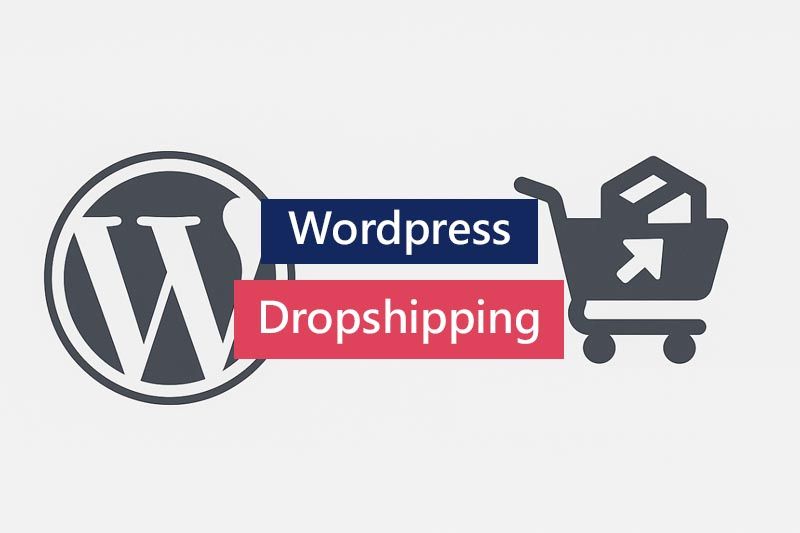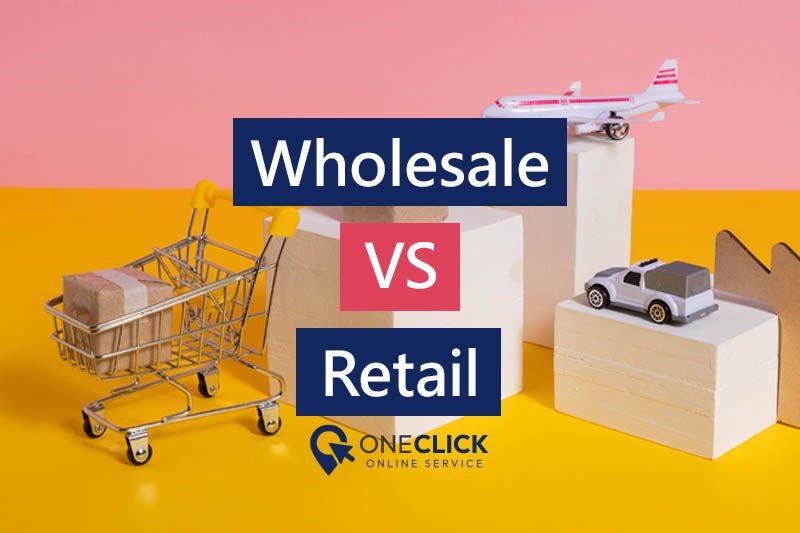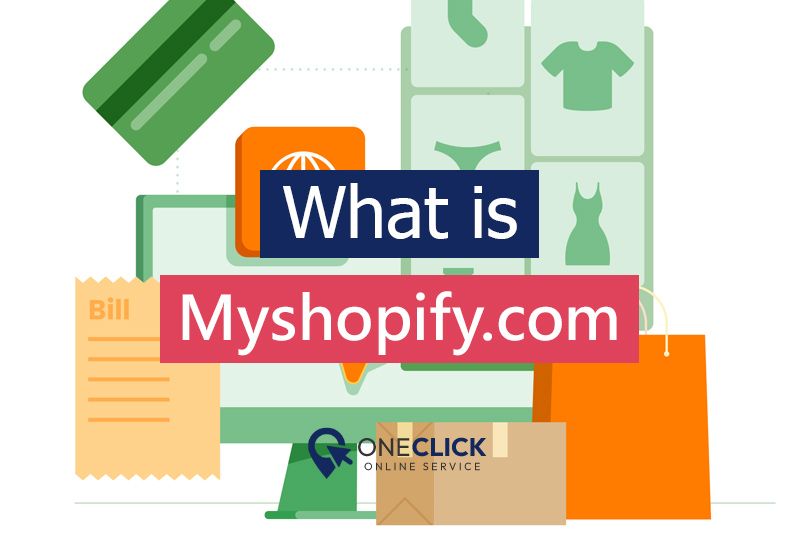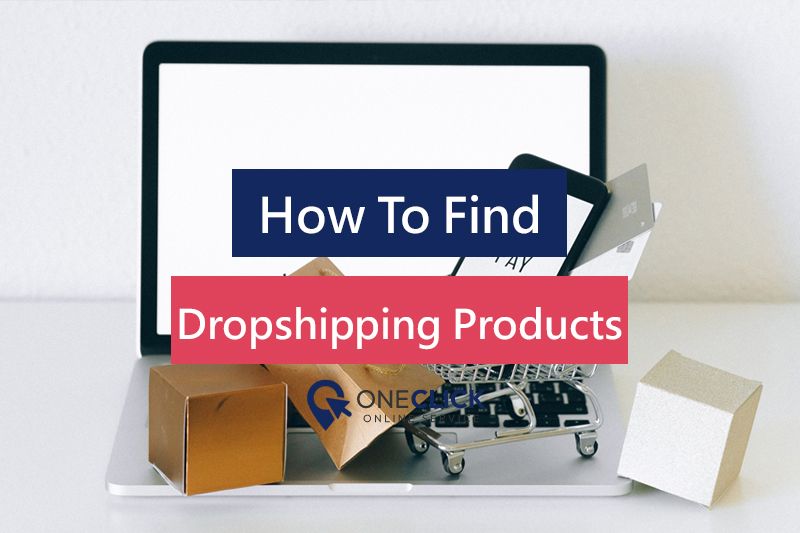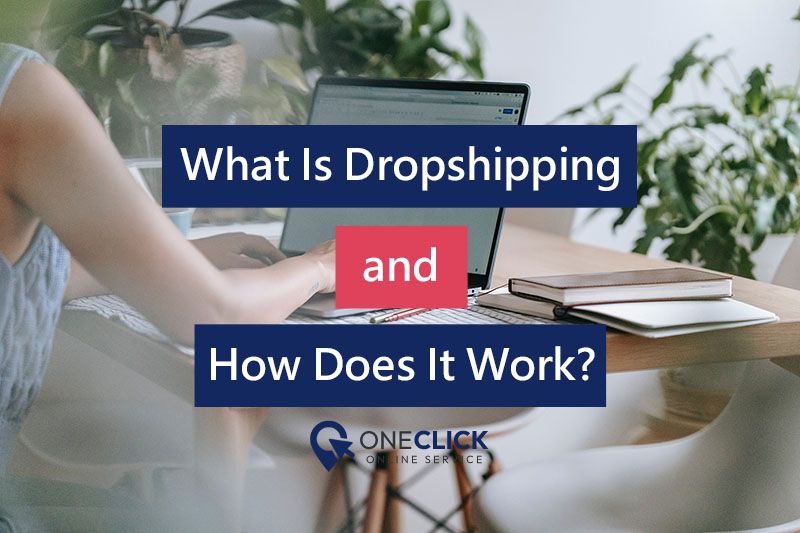Shopify vs. Etsy: Which Platform Fits Your Business Goals?
If you’re looking to launch an online business, chances are you’ve come across two popular names: Shopify and Etsy.
While both are powerful platforms that have helped millions of entrepreneurs sell online, they actually cater to different types of sellers and business models.
Understanding the core differences between them is crucial to making the right choice for your goals.
Shopify: Build Your Own Branded Store
Shopify is a comprehensive eCommerce platform that allows you to create a fully customizable online store. Think of it as your own piece of digital real estate — you control everything, from your website design and pricing strategy to how you collect customer data and manage marketing campaigns.
- Full ownership of your store and brand
- Flexible design themes & thousands of apps
- Integrated payment processing & global selling
- Advanced SEO & marketing tools However, with this freedom comes the responsibility of driving your own traffic. Unlike marketplaces, Shopify doesn’t have a built-in audience, so you’ll need to invest in marketing and advertising to attract customers.
Etsy: Tap Into a Ready-Made Marketplace
Etsy, by contrast, is a specialized online marketplace focused on handmade goods, vintage items (20+ years old), and craft supplies. It gives you immediate exposure to millions of shoppers actively searching for unique products.
- Access to a massive, niche-focused audience
- Quick to set up — no coding or complex design needed
- Tools to manage orders, inventory, and listings The trade-off? You have limited control over your branding and customer experience, and your shop sits alongside thousands of competitors. Etsy also enforces strict guidelines on what you can sell and how you can represent your business.
Shopify vs. Etsy: Detailed Comparison Table
| Feature | Shopify | Etsy |
|---|---|---|
| Features | Full eCommerce suite with inventory, orders, payments, SEO, blogging, multi-channel sales | Marketplace tools for listing, inventory, orders, simple promotions |
| Pricing | Starts at $39/month + payment fees (higher tiers add advanced features) | No monthly fee to open shop, but $0.20/listing + ~6.5% transaction & payment fees |
| Payment Options | Shopify Payments, PayPal, Apple Pay, 100+ gateways | Etsy Payments (credit cards, PayPal, Klarna, etc.) |
| Domain & URL | Custom domain (yourstore.com) fully owned by you | Etsy shop URL (etsy.com/shop/YourShopName) |
| User-Friendliness | Easy to use but with more setup needed; guides & wizards help | Extremely simple to set up; just create listings |
| Design Flexibility | Fully customizable themes & drag-and-drop editor, thousands of apps | Limited shop customization; Etsy controls most layout & design |
| Product Limit | Unlimited products across any category (must be legal & compliant) | Only handmade, vintage (20+ years), or craft supplies; unlimited listings within that |
| Marketing & Branding | Advanced SEO, email marketing, ads, loyalty apps; build your own brand identity | Etsy handles marketing to buyers but limited branding control; relies on Etsy SEO |
| Shipping & Dropshipping | Supports dropshipping & fulfillment partners (e.g., Printful, Oberlo) | Primarily for self-fulfilled handmade goods; no dropshipping allowed |
| Scalability | Designed to grow with multi-store, multi-language, multi-currency support | Harder to scale beyond Etsy; you're bound by their rules & audience |
| Security | PCI DSS compliant, SSL included, secure checkout on your domain | PCI compliant checkout managed by Etsy, but under Etsy’s domain |
| Customer Support | 24/7 live chat, email, phone support + extensive help docs | Email & limited chat support; no phone support |
Detailed Comparison of Shopify and Etsy
Now that you have a general idea of how these platforms work, let’s see how they fare against each other in a direct comparison.
1. Features
Shopify
Shopify is a full-scale eCommerce platform designed to give you everything you need to build, run, and grow an online business. It includes:
- Inventory management: Track stock, set low-stock alerts, and organize products with variants (size, color, etc.).
- Order & customer management: Manage orders, refunds, customer profiles, and even segment customers for marketing.
- Multi-channel selling: Sell on Facebook, Instagram, Google, Pinterest, Amazon, and more right from your dashboard.
- SEO & blogging: Built-in blogging platform plus advanced SEO controls for meta titles, descriptions, and URLs.
- App marketplace: Over 8,000 apps to extend functionality — from loyalty programs to upsells and advanced analytics.
- Abandoned cart recovery: Automated emails to recover lost sales. It’s built for sellers who want a standalone store with maximum control, capable of growing into a serious brand.
Etsy
Etsy is a specialized online marketplace, primarily for handmade, vintage, and craft supply sellers. It’s designed to help you list products and get discovered by buyers already browsing the platform. Features include:
- Quick product listings: Add photos, descriptions, and tags; Etsy handles structured categories.
- Inventory & order management: Basic tools to track orders and communicate with customers.
- Promotions: Run sales, coupon codes, or pay for Etsy Ads to appear higher in search.
- Shop manager: A simple dashboard to track stats like views, favorites, and sales.
- Integrated messaging: Chat with buyers directly within Etsy. Unlike Shopify, Etsy is not meant to be a standalone store — it’s a shared marketplace, so features are optimized for sellers fitting into Etsy’s ecosystem.
2. Pricing
Shopify
Shopify runs on a subscription-based pricing model, meaning you pay a monthly fee to use the platform — much like paying rent for your own digital storefront. Here’s a quick breakdown of Shopify’s main plans (billed monthly):
- Basic Shopify: Starts at $39/month — includes a full online store, unlimited products, discount codes, abandoned cart recovery, and basic reports.
- Shopify: Around $105/month — adds professional reports, better shipping discounts, and more staff accounts.
- Advanced Shopify: Approximately $399/month — comes with advanced reporting, third-party calculated shipping rates, and higher-level features for growing operations. On top of this, Shopify charges transaction fees if you don’t use Shopify Payments (for example if you use PayPal only). These are typically 0.5% to 2%, depending on your plan. Shopify Payments (their own gateway) eliminates these extra transaction fees, though standard credit card fees (around 2.9% + 30¢ per transaction in the US) still apply. So while Shopify involves a fixed monthly cost plus payment fees, you get predictable billing and loads of eCommerce features built in.
Etsy
Etsy works very differently. There’s no monthly subscription required just to have a shop — it’s a pay-as-you-go model, making it easy to start with minimal overhead. Here’s how Etsy’s pricing breaks down:
- Listing fees: $0.20 USD per item listed, valid for 4 months or until the item sells.
- Transaction fee: 6.5% of the total order amount (including shipping).
- Payment processing fee: Varies by country, around 3% + 25¢ per order in the US.
- Optional advertising: Etsy Ads costs are extra (you set your budget), plus offsite ads where Etsy may advertise your products on Google or social platforms and take an additional 12-15% if the sale comes from that ad. This means with Etsy, your costs scale with your sales volume. You pay small fees each time you list and sell, which is great for testing the waters but can add up as your business grows.
3. Payment Options
Shopify
When it comes to accepting payments, Shopify gives you a wide range of choices and the flexibility to pick what works best for your business. Here’s how it works:
- Shopify Payments: This is Shopify’s built-in payment processor. It supports major credit cards, Apple Pay, Google Pay, and local payment methods in many countries. Using Shopify Payments also means you avoid paying extra transaction fees to Shopify.
- Third-Party Gateways: Shopify integrates with over 100 external payment providers worldwide, including PayPal, Stripe, Authorize.net, Klarna, Afterpay, and more. This means you can offer “buy now, pay later” or local wallets depending on your target market.
- Manual payments: You can set up bank deposits, cash on delivery, or custom methods for offline orders. Essentially, Shopify is built to handle international sales and diverse customer preferences, letting you tailor payment options to your buyers.
Etsy
Etsy handles payments differently. Because it’s a marketplace, it controls the checkout process for you.
- Etsy Payments: This is the required method in most countries. It consolidates all major payment methods (credit/debit cards, PayPal, Apple Pay, Google Pay, Klarna, iDEAL, Sofort, and more) into one system. Etsy collects the payment, deducts fees, and deposits the remainder into your bank account.
- PayPal: In a few countries where Etsy Payments isn’t available, sellers can accept PayPal directly. Etsy’s approach is simpler for sellers — you don’t have to configure different gateways. However, it also means you have less control over checkout customization and can’t negotiate your own payment processing rates.
4. Domain & URL
Shopify
A major advantage of using Shopify is that you get your own fully branded website domain, which means you control your store’s web address and overall online identity.
- When you sign up for Shopify, you can connect an existing domain (like yourbrand.com) or purchase a new one directly through Shopify, making setup seamless.
- Your store lives at a professional, standalone URL — for example: www.yourbrand.com
- You can create additional URLs for products, collections, blogs, or landing pages. This is essential for branding, SEO, and building long-term trust with customers. Having your own domain means your store is truly yours, independent of any third-party marketplace. You’re not competing for attention on a shared site, and your brand gets all the spotlight.
Etsy
Etsy works very differently. Because it’s a marketplace, your shop lives inside Etsy’s platform. That means your store URL follows this structure: bash www.etsy.com/shop/YourShopName This URL is tied to Etsy’s ecosystem, not your own domain. Etsy controls the site architecture, which means:
- You can’t use a standalone domain to point directly to your Etsy listings (though you can sometimes redirect a custom domain to your Etsy shop).
- You also can’t change Etsy’s URL structure, so your shop always carries the Etsy branding. While this makes setup extremely easy — no domain registration, DNS, or technical details to worry about — it also means your business is always attached to Etsy’s brand, not operating under your own unique domain.
Key takeaway on Domain & URL:
- Shopify: Lets you run a store on your own unique, branded domain, giving full control over your web presence and credibility.
- Etsy: Your shop is always hosted under Etsy’s domain, which is quick to start but ties your brand identity to Etsy.
5. User-Friendliness
Shopify
Shopify is designed to be very beginner-friendly for building a full online store, but because it gives you so much power and flexibility, there’s naturally a bit more to learn.
- The platform uses a guided setup wizard that helps you add products, choose themes, and configure payments step by step.
- It features a drag-and-drop store editor, so you can build pages without coding.
- The dashboard is clean and modern, with tabs for orders, products, customers, and analytics — everything is organized logically. That said, Shopify does require a learning curve if you’re completely new to running an online store. You’ll have to figure out things like domain setup, shipping rules, tax settings, and marketing apps. But once you’re familiar, it’s very streamlined, and Shopify’s massive library of tutorials and 24/7 live support helps a lot.
Etsy
Etsy is practically unbeatable when it comes to ease of getting started.
- Opening a shop is incredibly simple: you create an account, set your shop preferences, and start adding products.
- Etsy automatically handles payment processing, sales tax in many regions, and even marketing placements for your listings.
- There’s no need to design a website, configure a theme, or figure out complex backend settings. The downside is that this simplicity comes from Etsy controlling most of the setup for you. You trade flexibility for speed — you can’t change much about your storefront design or checkout experience.
6. Design Flexibility
Shopify
When it comes to design freedom, Shopify stands out as one of the most customizable eCommerce platforms available.
- Themes: Shopify offers 100+ professional themes (both free and paid), covering virtually every industry style. Each theme is mobile-friendly and polished right out of the box.
- Customization tools: You can use the drag-and-drop editor to arrange sections, change colors, fonts, and layouts without touching code. For more advanced changes, Shopify gives you full access to the theme’s underlying code (HTML, CSS, Liquid), allowing developers to create completely unique storefronts.
- Apps & features: Thousands of apps let you add sliders, pop-ups, product recommendations, countdown timers, or custom product pages — so your site doesn’t look or function like anyone else’s. This makes Shopify ideal if you want to build a truly branded online store that stands apart from competitors, down to the smallest details.
Etsy
Etsy is nearly the opposite — it’s designed to keep the marketplace consistent for shoppers, which means your ability to change how your shop looks is extremely limited.
- You can upload a shop logo and banner, and write a shop announcement or story to personalize your storefront a bit.
- The product listing format, fonts, layouts, and checkout process are all standardized across Etsy.
- You can’t add new sections to your shop page, create custom landing pages, or significantly change colors and style. While this uniform look gives Etsy a clean, familiar shopping experience (which buyers like), it also means you can’t create a distinctive visual brand on Etsy alone. Your shop is always styled within Etsy’s broader framework.
7. Product Limit
Shopify
Shopify places no restrictions on what you can sell (as long as it’s legal and compliant with their terms).
- You can list unlimited products, with unlimited variants (sizes, colors, styles).
- It supports digital products, physical goods, services, memberships, and even event tickets.
- You also aren’t restricted by niche — you could sell apparel, electronics, home goods, or mix categories all in one store. This makes Shopify perfect for businesses that plan to expand their catalog over time or want to experiment with different product lines.
Etsy
Etsy is intentionally more restrictive, focusing on a specialized market:
- You can only sell handmade items, vintage goods (at least 20 years old), or craft supplies.
- Technically, you can have an unlimited number of listings, but every item has to fit these categories.
- Etsy actively enforces this — if you try to list non-handmade mass-produced products outside of these guidelines, your shop could face penalties or closure. This keeps Etsy’s marketplace curated and niche-focused, but it limits business models that want to sell general retail products.
8. Marketing & Branding
Shopify
Shopify is built for entrepreneurs who want to establish and grow their own brand, so it offers extensive marketing and branding capabilities.
- You can customize nearly every aspect of your site’s look, voice, and customer journey.
- Built-in SEO tools help you control page titles, descriptions, URLs, and image alt text for better Google rankings.
- Shopify supports email marketing, loyalty programs, retargeting ads, SMS campaigns, and more through apps.
- You can integrate with Facebook, Instagram, TikTok, Pinterest, and Google Shopping to run paid ads or sync your catalog for shopping posts. This means your business is always front and center, building direct relationships with your audience.
Etsy
Etsy is much more limited in branding and advanced marketing.
- You can personalize your shop with a logo, banner, and a story section, but the Etsy brand dominates.
- Etsy’s built-in marketing mainly happens through its search engine and recommendations, which drive traffic to listings based on tags, titles, and buyer behavior.
- You can run Etsy Ads to increase visibility within Etsy’s platform, but it’s pay-to-play, and still framed as “Etsy shopping.” In short, Etsy markets Etsy first, then your shop. You get exposure, but you’re sharing the spotlight with thousands of other sellers.
9. Shipping & Dropshipping
Shopify
Shopify gives you total control over shipping, making it incredibly versatile.
- Set custom shipping rates by weight, price, or location.
- Offer local delivery, in-store pickup, or worldwide shipping.
- Integrate with carriers like USPS, UPS, DHL, and Canada Post for real-time shipping rates and discounted labels. Most importantly, Shopify supports dropshipping through apps like Oberlo, DSers, Spocket, or Printful. This means you can sell products you never physically handle — suppliers ship directly to your customers.
Etsy
Etsy is traditionally geared toward sellers who make or source products themselves and ship them directly.
- You handle your own packaging and shipping. Etsy provides discounted shipping labels and helps estimate costs, but you run fulfillment.
- Etsy doesn’t officially support dropshipping — your products must meet handmade, vintage, or craft-supply rules. While some use production partners (like print-on-demand for art), it’s closely monitored to ensure it aligns with Etsy’s guidelines. So Etsy works best for makers and artisans who ship their own creations, not businesses aiming to dropship mass-market products.
10. Scalability (straight, no-nonsense tone)
If you’re serious about growing your store beyond a small shop, Shopify is built for it. You can add endless products, use advanced inventory across warehouses, and even expand into other sales channels like retail stores or marketplaces. Shopify Plus is there if you ever become a high-volume merchant needing automation and dedicated staff. You’re never stuck. Etsy, however, doesn’t scale in the same way. It’s perfect for staying a small creative shop. Your storefront will always be tied to Etsy’s marketplace. You can’t break out with your own large brand ecosystem. That’s by design — Etsy favors boutique sellers and unique products over big retail operations.
11. Security (conversational analogy style)
Think of Shopify like renting a private building with a security team. The whole infrastructure — encryption, PCI compliance, fraud checks — is maintained for you, but you’re still the business owner. Customer data is yours, and the front door says your brand’s name. You’ve got the keys, but you don’t worry about the security alarms or software updates — Shopify does all that behind the scenes. Now look at Etsy. It’s more like having a stall in a busy craft fair. The payment counters, cash drawers, and security cameras all belong to Etsy. You never handle the sensitive card details yourself; Etsy does. That’s simpler in many ways, but also means your shop’s visitors — and their data — technically belong to the marketplace, not to you.
12. Customer Support (practical bullet format)
Shopify:
- 24/7 support via live chat, email, and even phone — doesn’t matter if it’s midnight or Sunday.
- Rich help center, with tutorials that go deep (custom domains, tax setups, API integrations).
- A big, active community forum where merchants solve each other’s problems.
- Higher plans come with dedicated advisors.
Etsy:
- Mostly runs on email tickets, replies usually land in a day or two.
- Some sellers see a live chat button, but it’s hit-or-miss and not 24/7.
- No phone line to call.
- Strong on self-service — detailed seller guides and forum discussions are your primary help.
Shopify vs. Etsy: Who Wins?
It’s not about who’s better — it’s about which fits your business. Shopify gives you total freedom to build a brand; Etsy plugs you into a ready-made audience for handmade and vintage.
Choose Etsy If:
- You sell handmade goods, vintage finds, or craft supplies that fit Etsy’s niche.
- You want instant exposure without running your own marketing campaigns.
- You prefer a simple setup with no need to manage a full website.
Choose Shopify If:
- You want your own branded store on a unique domain with full design control.
- You plan to scale, sell beyond handmade, or add multiple products and channels.
- You care about owning customer data and building long-term relationships.
FAQs about Shopify and Etsy
Can Shopify and Etsy work together?
Yes, you can connect them. Many sellers use Shopify as their main store and sync products to Etsy to tap into its large marketplace audience. Shopify even has direct integrations and apps (like Etsy Marketplace Integration) that let you manage Etsy orders and inventory right from your Shopify dashboard.
Is it better to sell on Etsy or Shopify?
It depends on your goals. Etsy is great for handmade, vintage, or craft supplies when you want fast access to shoppers already browsing for those items. Shopify is better if you want your own store, total brand control, and the ability to scale beyond Etsy’s niche restrictions.
Can I transfer Etsy to Shopify?
Sort of — there’s no one-click “move everything” button, but you can import your Etsy listings into Shopify using tools or CSV files. This copies over product details to help you build your Shopify catalog. However, reviews and your Etsy customer data stay on Etsy.
Are Etsy and Shopify free?
Neither is fully free. Etsy has no monthly fee to start a shop, but charges $0.20 per listing plus around 6.5% + payment fees on each sale. Shopify requires a monthly subscription (starting at $39), plus standard payment processing fees, but doesn’t charge per listing.
What are the Best Shopify and Etsy Alternatives?
Alternatives to Shopify
If you want to build your own online store but Shopify doesn’t quite fit, try these:-
- Wix eCommerce: Great for small shops wanting more visual design control. Very drag-and-drop friendly.
- BigCommerce: Similar to Shopify but with more built-in features for large catalogs and B2B.
- Squarespace: Ideal for creators, artists, and small brands that care most about beautiful design.
- WooCommerce: A free plugin for WordPress if you want maximum customization and control, but are comfortable handling more of the tech.
Alternatives to Etsy
If you’re looking for marketplaces similar to Etsy, especially for handmade or unique items:
- Amazon Handmade: Like Etsy, but taps into Amazon’s huge audience. Approval required for handmade sellers.
- eBay: Less niche, but still works for vintage and collectible items, with a massive global customer base.
- Facebook & Instagram Shops: Lets you sell directly through social media without a full site.
- Faire: A wholesale marketplace if you’re ready to sell to retailers, not just direct to consumers.
In Conclusion
Choosing between Shopify and Etsy comes down to what kind of business you want to build. Etsy is perfect if you’re selling handmade or vintage products and want immediate access to shoppers already searching for those items. Shopify, on the other hand, gives you the power to create your own fully branded store with complete control over design, products, pricing, and customer relationships — making it a stronger option for long-term growth and scaling beyond niche markets.
If you’re serious about building your own online store and want to make dropshipping as simple as possible, try our platform, OneClick Dropshipping. With OneClick, you can source products and automate order fulfillment without any technical headaches. Get started today by registering here:. We’d love to help you launch and grow your eCommerce business.



